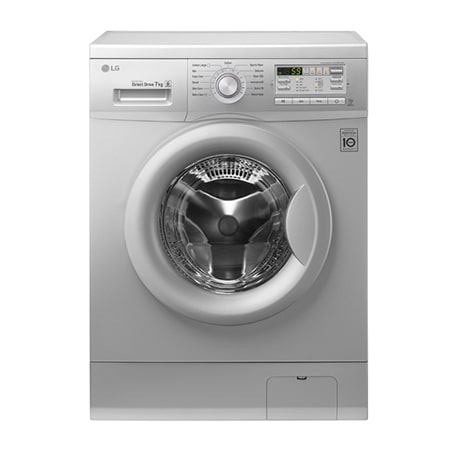Running modern washing machine on solar energy with 350W pure sinewave inverter
I did a bit of research on running a washing machine on a small solar system this year (2013) and didn't get much up to date info. I have done it successfully now, so I thought I'd post the info here if anyone is interested as this was one of the better discussions on the issue:
PV system:
1x 80W PV Panel
1 x 100Ah battery
350W 12V Victron pure sine wave inverter
New LG washing machine:
Cost: about US$ 450
Energy Rating: A+++
We run this once a week and it works perfectly. We run it on the following settings:
*Main setting: Cotton Eco
*Temp: Cold Wash
*Spin: 400rpm
water usage: 40L for 7kg load
Total elec usage: about 100Wh
Running time: 2 hours
Peak energy usage (beginning of spin cycle): 250W (for a minute or so).
Of course it is not possible to have hot washes on this system - the inverter wouldn't cope. And the spin speed mustn't be above 400rpm. The clothes are spotless after a cold wash - and I do lots of dirty outdoor work!
I have another similar LG washing machine (8kg) that I use at our lodge - it runs on a 1600W inverter shared with 2 Bosch fridges and 2 AEG chest freezers, and that spins easily at the highest speed, 1200rpm, with a peak load of about 550W at the beginning of the spin).
So if you want to get a washing machine off grid, go for a new LG A+++ machine and wash cold.
Next project: dishwashing machine that uses solar heated water only (no heating element)!
I did a bit of research on running a washing machine on a small solar system this year (2013) and didn't get much up to date info. I have done it successfully now, so I thought I'd post the info here if anyone is interested as this was one of the better discussions on the issue:
PV system:
1x 80W PV Panel
1 x 100Ah battery
350W 12V Victron pure sine wave inverter
New LG washing machine:
Cost: about US$ 450
Energy Rating: A+++
We run this once a week and it works perfectly. We run it on the following settings:
*Main setting: Cotton Eco
*Temp: Cold Wash
*Spin: 400rpm
water usage: 40L for 7kg load
Total elec usage: about 100Wh
Running time: 2 hours
Peak energy usage (beginning of spin cycle): 250W (for a minute or so).
Of course it is not possible to have hot washes on this system - the inverter wouldn't cope. And the spin speed mustn't be above 400rpm. The clothes are spotless after a cold wash - and I do lots of dirty outdoor work!
I have another similar LG washing machine (8kg) that I use at our lodge - it runs on a 1600W inverter shared with 2 Bosch fridges and 2 AEG chest freezers, and that spins easily at the highest speed, 1200rpm, with a peak load of about 550W at the beginning of the spin).
So if you want to get a washing machine off grid, go for a new LG A+++ machine and wash cold.
Next project: dishwashing machine that uses solar heated water only (no heating element)!


Comment